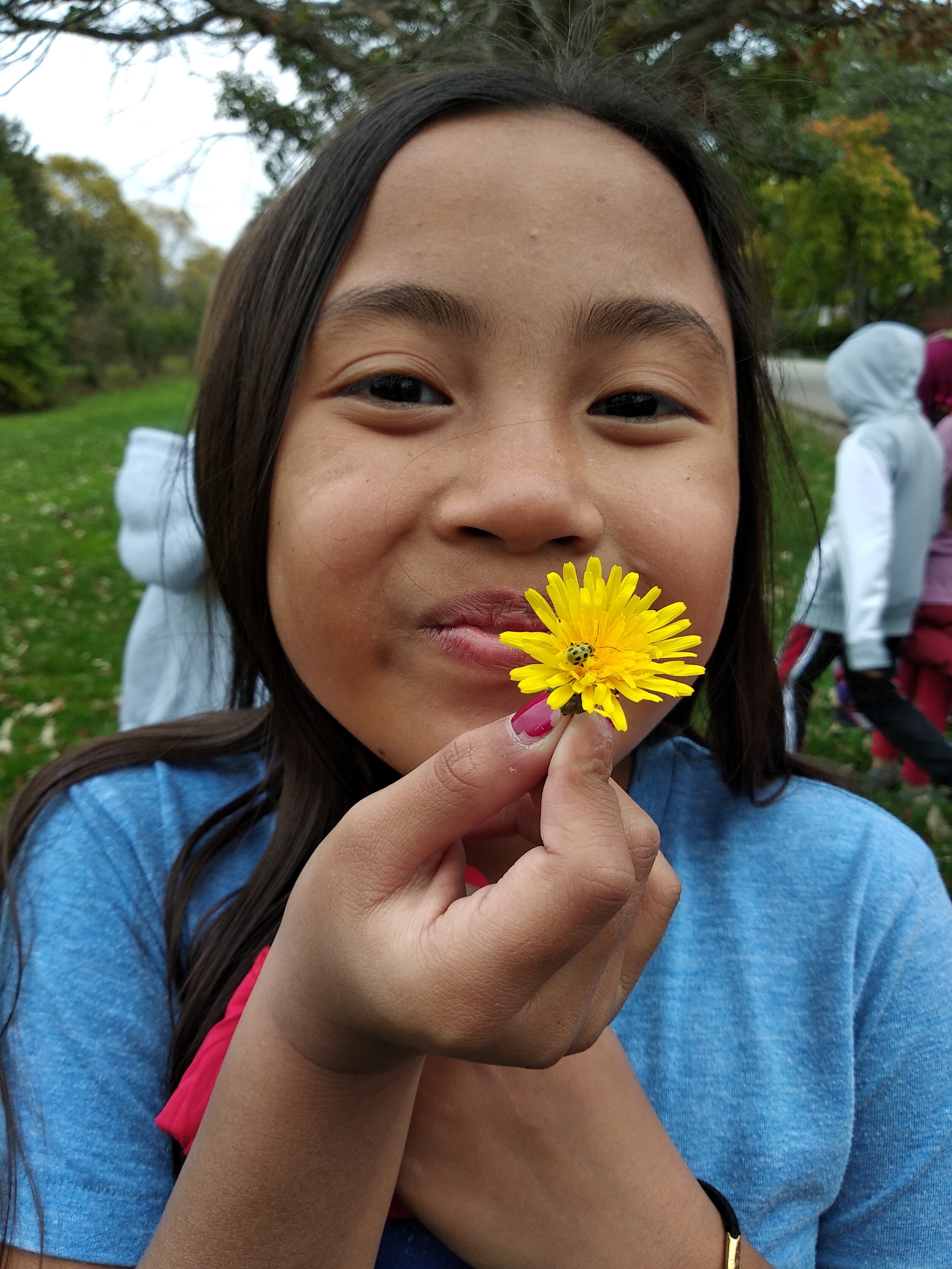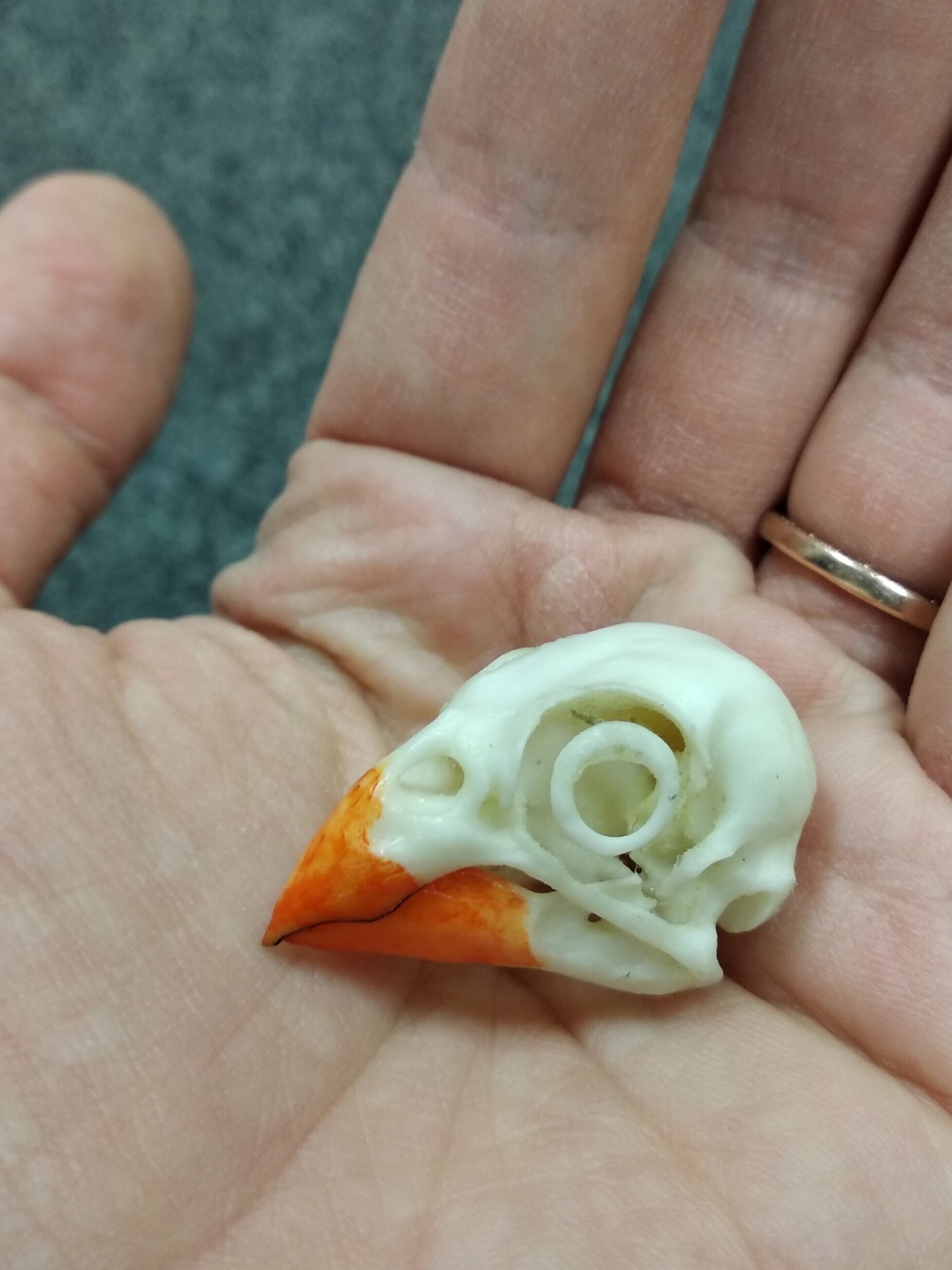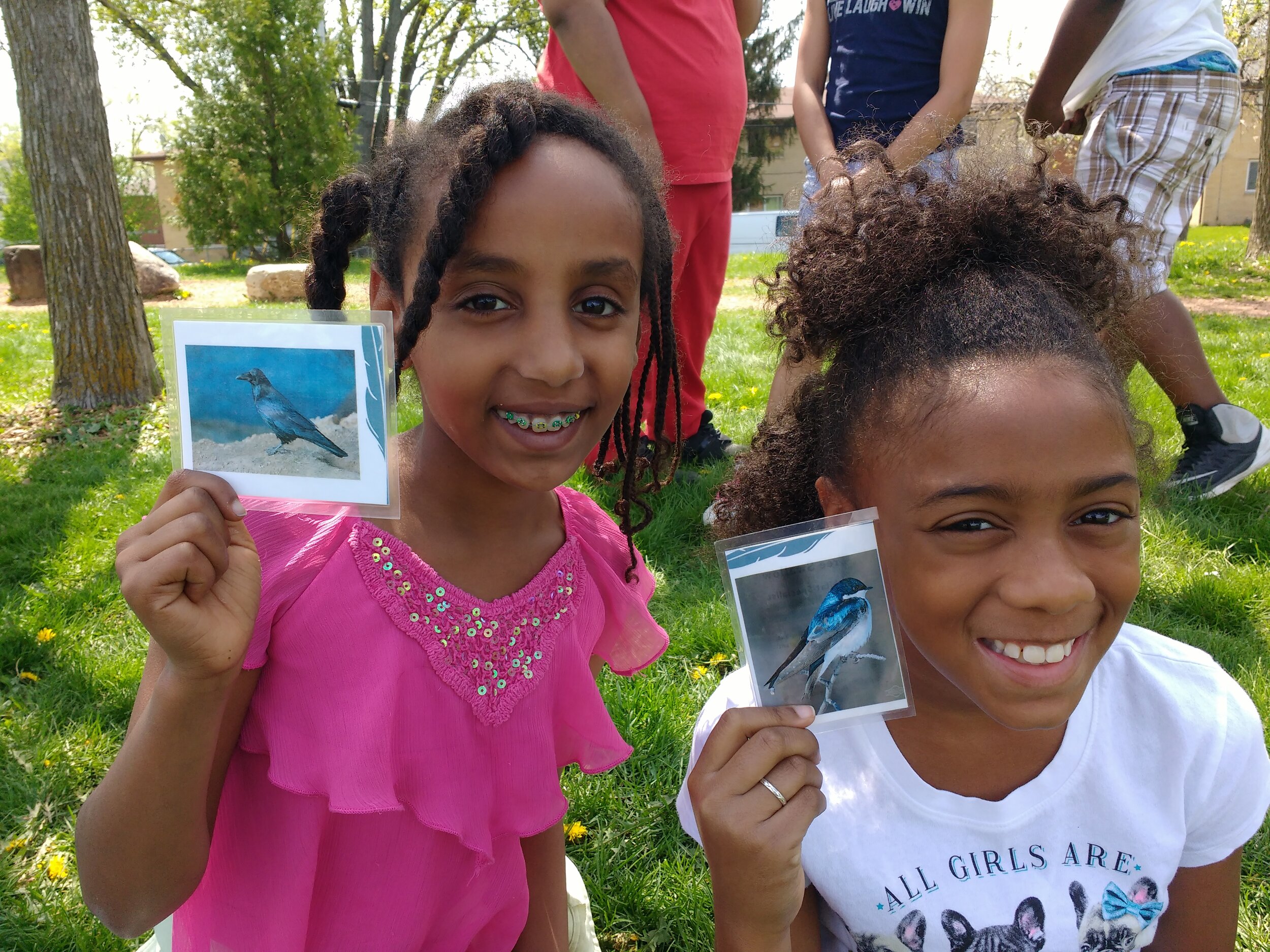Welcome to our Lesson Sampler!
This specially curated list of lessons is guaranteed to delight your kids. If you want to jump right into Outdoor Education and Environmental Education without all of the lesson planning, this is the place for you. Choose from our list of lessons, pick your date, and our educators will come to you.
How it works:
A child holds a pair of binoculars with an insect resting on them. Binoculars are a great exploration tool for things both far away and up close!
Are you in our service area? Madison schools are easiest for us to visit, but we will try to come to any school in Adams, Columbia, Dane, Dodge, Green Lake, Iowa, Jefferson, Marquette, Richland, and Sauk counties.
Determine what day and time will work best for you. Our educators are available Monday through Friday, 8:30 a.m. - 5:00 p.m.
Determine how much time you have available. Our lessons are best with at least an hour of time. Most lessons can be adjusted to be longer or shorter, with the upward limit being three hours.
Choose your main lesson from the list below.
Choose add-on lessons from the bottom of the page.
Fill out our lesson request form.
Reach out to us with any questions you have! Call the office at 608-255-2473 or email education@swibirds.org
Table of Contents
A child writes in her science journal during a sit-spot.
Scroll down to read an overview of the activity, the time and space it requires, and what we’ll need from you to make it successful.
Main Lessons:
Mini Add-on lessons:
Main Lessons
1. Nature Walk & Scavenger Hunt
A smiling child holds a dandelion flower with an insect on it. Scavenger hunts help kids look closer at things that they see everyday.
We’ll take a walking tour of the neighborhoods surrounding your school, and see the world with new eyes - literally. We can bring either magnifying glasses or binoculars so that kids will see new things in new ways. Our scavenger hunt focuses on your choice of topic: birds, wildlife, signs of wildlife, insects, or sounds.
What we’ll need from you: permission to take the kids off of school property, enough teacher/adult support to safely take your group outside and meet the needs of your students, a preferred walking route through your neighborhood.
2. Bird ID Lessons & Neighborhood Bird Walk
Four kids use binoculars to look at seagulls (not pictured) out on Lake Mendota. This group is SO excited to use binoculars!
First, we’ll spend 15-30 minutes learning how to identify birds: kids will learn about field marks, bird silhouettes, and flight patterns. If we have time, we’ll practice with kid-friendly field guides. All information can be adjusted for kids in grades k-12.
Second, we’ll go on a 30-60 minute neighborhood walk, looking and listening for birds. Kids will love using our binoculars to bring those birds closer. Morning walks are best!
What we’ll need from you: A space where the group can gather to learn (inside a classroom or out on the school grounds), permission to take the kids off of school property, enough teacher/adult support to safely take your group outside and meet the needs of your students, a preferred walking route through your neighborhood.
3. Exploring Trees & Plants
Two kids use the Madison Audubon Leaf ID Guide to learn the parts of a leaft. Our leaf guide breaks down the parts of a plant and shares the words scientists use to describe each part.
Choose the activities that meet your needs & timeframe:
a) Tree ID - Kids learn to identify common trees.
b) Leaf Exploration - Kids learn scientific words used to describe leaf parts, and some leaf ID.
c) PLANTO - A scavenger hunt played like BINGO all about plants.
d) Meet a Tree - Kids are introduced to a tree while blindfolded, and then need to find “their” tree again when the blindfold is removed.
e) Tree Tag - Tag with rotating tree species as safe zones!
What we’ll need from you: Natural areas to explore, either on school grounds or out in the neighborhood (and permission to leave school grounds). The plants that you want to study will need to be present! Enough teacher/adult support to safely take your group outside and meet the needs of your students.
4. All About Owls
Our Great Gray Owl specimen, Wilson, came to visit this classroom of curious kids.
Choose the activities that meet your needs & time frame:
All About Owls - Learn what makes owls special, meet our (stuffed) owls
Owl Eyes - A running game teaching kids one big difference between owl and human eyes.
Owl Ears - A quiet / stationary game letting kids test whether their hearing is as good as an owl’s.
Owl Calls - Kids learn the calls of the three most common owls in Madison, and try to copy them using their own voices.
Owl Pellet Dissection (while supplies last) - Kids will get their own owl pellet to dissect!
What we’ll need from you: Space to gather as a group, and large open space to play running games. If adding owl pellets:tables for dissecting, indoor works best for pellets if windy, cold, or rainy.
5. Everybody Eats
Students learn the complicated nature of a food web using strings, open space, and imagination.
Choose the activities that meet your needs & time frame:
Predator/Prey Tag - A running tag game using local predator and prey species.
Prairie Food Web - Kids are assigned a prairie animal and use yarn to build a real-life food web. We can discuss human impacts on the food web too!
Deer Survival Tag - Predator/prey tag with a twist: deer are assigned roles and given rules for how they can move. Some are easier to catch than others!
What we’ll need from you: space to spread out and run!
6. Bird Beak Adaptations
A replica northern cardinal skull fits neatly into the palm of your hand. Explore all of our bird skulls with our Bird Beak Adaptations lesson.
Kids will get to use bird beaks (spoons, eye droppers, skewers, and pliers) to try to eat food like worms (pasta), algae (glitter floating in water), larvae (earplugs in a log), and birdseed (just birdseed - ha!) Kids will need to determine if their bird is a specialist or generalist, and what food they’re best at eating.
If age appropriate, we can read Best Beak in Boonaroo Bay by Narelle Oliver (k-2).
Kids can explore our amazing replica skull collection, including: sandhill crane, great blue heron, piliated woodpecker, red-tailed hawk, great horned owl, Northern cardinal, ruby-throated hummingbird, and more!
What we’ll need from you: Space to spread out where the group can gather: either a few small tables, one large table, a floor, or a flat outdoor space. Water is involved in Bird Beak Buffet, and spills are likely.
7. Habitat is Home
Two young girls hold pictures of birds they’re using while playing Habitat Scramble: an outdoor, movement-based activity.
Choose the activities that meet your needs & time frame:
Habitat Scramble - Kids pretend to be birds and race to find appropriate habitat. We can add a climate change option too!
Your Forest- Small groups brainstorm and illustrate their “dream forests,” while also making sure to include elements for longevity and ecological health.
Migration Obstacle Course - Kids experience how challenging migration can be for birds.
What we’ll need from you: Habitat scramble: Space to make a large circle including the whole group. If it is windy, it's best to play Habitat Scramble inside. Your Forest: Space for kids to sit in small groups to discuss & draw. Clipboards can be used for drawing if tables are unavailable. Migration OC: space to run!
8. All About Bird Song
Binocular-clad children check out a bird ID guide to determine which species they just observed.
We’ll teach why birds sing, and the types of noises they make (alarm calls, contact calls, songs). Then, we can:
Bird Communication Skits- Kids will create and act out skits about why and how birds communicate.
Beetles Bird Language Project - We’ll be scientists listening to the birds in your school yard, neighborhood, or natural area!
Bird Call BINGO - learn local Wisconsin bird calls while playing BINGO.
Owl Calls (see above in All About Owls)
What we’ll need from you: Outdoor places to sit and listen to birds with a good chance of actually hearing them. Bird Call BINGO is best played on a flat surface where wind won’t blow pieces away.
Mini Add-on Lessons
A child rests quietly in their sit-spot near Wingra Creek. Sit-spots are great for silent reflection, solo observations, or giving kids a meditative moment to collect themselves between lessons.
Bird Yoga - 5 to 10 minutes. Learn about cool birds in Wisconsin while acting out some of their behaviors. We’ll nee enough space for kids to stand with their arms out and not touch each other: indoor or outdoor.
Mystery Bag - 10 to 20 minutes. Kids will reach into a cloth bag to feel a mystery natural object. We’ll reveal the objects after everyone has felt, and will discuss what they are. Space for group to gather in a seated circle
Predator Prey Tag - 10 to 30 minutes. A running tag game using local predator and prey species. We’ll need a large outdoor space to run (a gym would also work).
Sit-Spots - 15 - 30 minutes. Kids each find their own special place to sit in nature. We’ll look, listen, or meditate, and then discuss as a group. Natural space is best, green space in schoolyard could work in a pinch
Lessons for Educators
A teacher and student explore pollinators visiting an aster flower in early fall.
We also offer lessons for teachers too! Learn tips and tricks for teaching effectively outside, and learn how to build your lesson plans to follow the seasons AND your indoor curricula.















